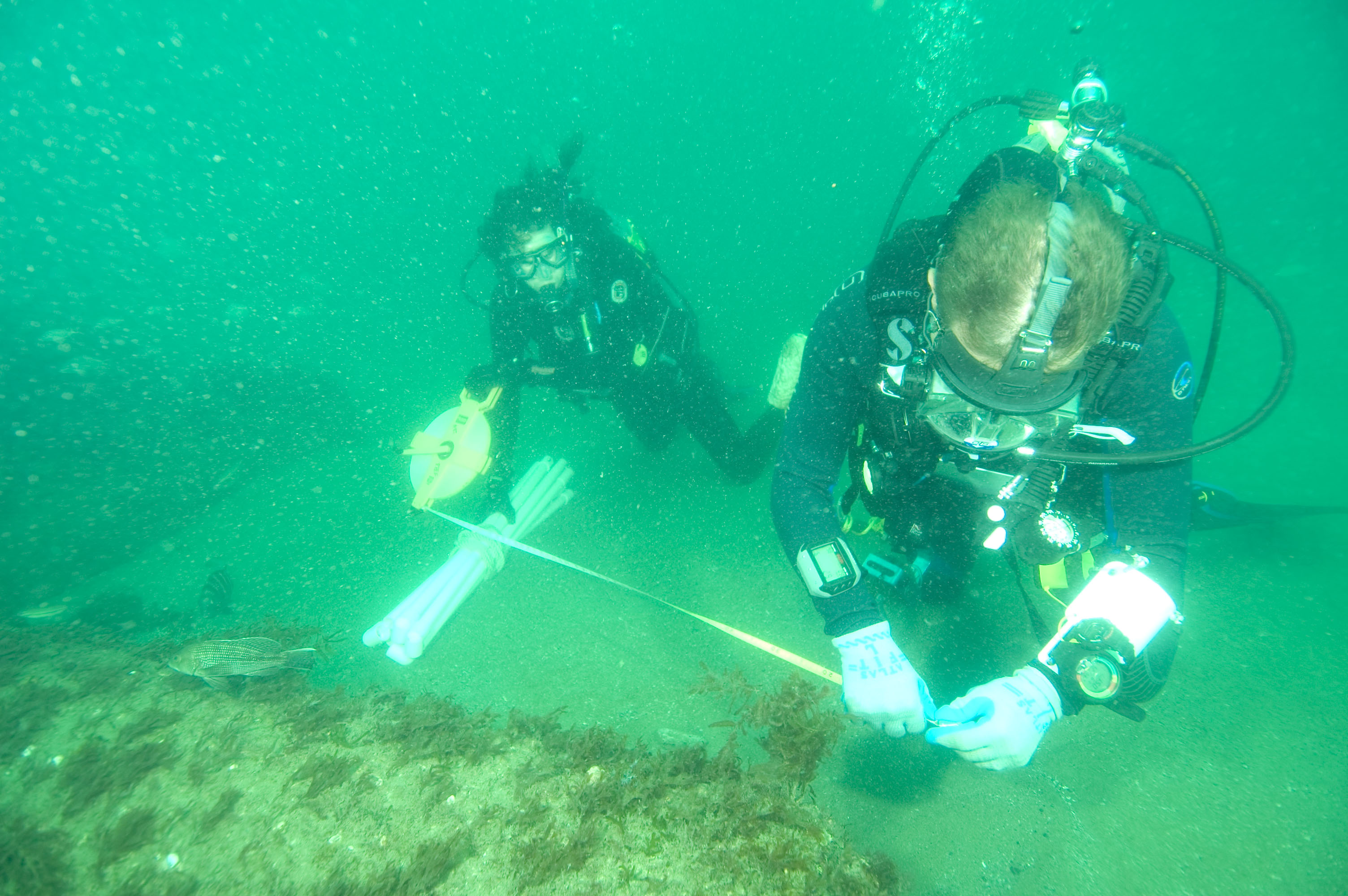

After graduating in 1998 from UNCW with a bachelor’s in Marine Biology, I began my migration along the east coast. I left North Carolina for the Florida Keys where I taught marine ecology and headed up a modest research facility in Key Largo. Three years of fun in the sun, endless days underwater, and the birth of my first child brought me back home to NC, where my wife and I chose to raise our son. After a short stop in the Outer Banks as a gill net technician with the NC Division of Marine Fisheries, we settled down in Carteret County, where I currently reside as a biologist with the NC Artificial Reef Program. My work focuses on how artificial reef material complexity affects species composition and examining when species diversity and abundance returns begin to diminish as reef dimensions increase.
In the fall of 2006 I returned to UNCW, joining Dr. Scharf’s fisheries lab to begin working towards my MS degree on a focused part of my work with the Artificial Reef Program. Commercially and recreationally important species including black sea bass (Centropristis striata), gag grouper (Mycteroperca microlepis), Grey triggerfish (Balistes capriscus) as well as several Sparid and Paralichthid species are known to aggregate around complex artificial reef material. Varying the complexity of the reef by altering the amount of reef material deployed in a defined area may generate variations in species composition as more complex reefs may attract a different suite of species. I also hypothesize that species diversity and abundance will eventually reach an asymptote despite increases in the complexity of the reefs. An axiomatic assumption is that as complexity of a habitat increases, diversity should increase with it. As complexity increases across artificial reefs, hypothetically, there should be a complexity threshold above which the diversity, richness and composition of the finfish community will not increase further. When this point is reached, increasing the quantity of reef material will become non-beneficial and economically wasteful. Determining reef material complexity thresholds will improve our understanding of how complexity affects species preference and the point of diminishing biological returns, and better guide artificial reef managers in developing reef systems that produce diverse finfish communities and more angling opportunities.